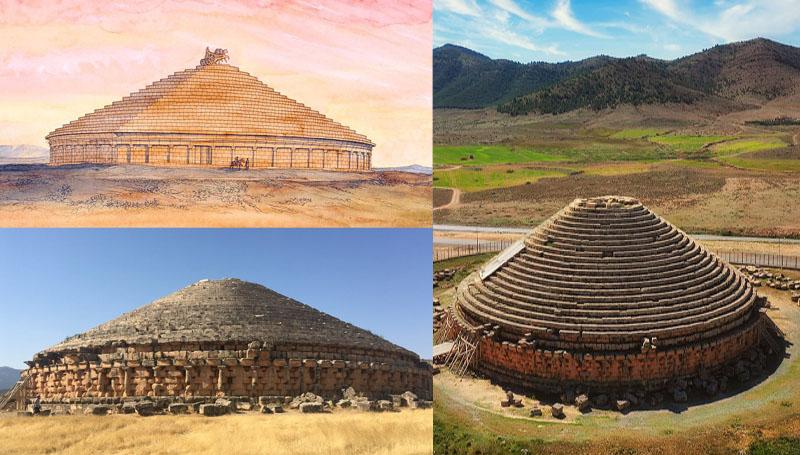Not to be confused with the similar looking, 1st century BC Royal Mausoleum of Mauretania, which is also a Numidian mausoleum located in northern Algeria, and is essentially a more monumental copy of the earlier mausoleum of Madghacen, featured in this article.
The monument is named after Madghis, a semi-legendary ancestor of a number of Amazigh tribes, although the early radiocarbon dates makes this association with Madghis highly unlikely, and the architecture is in fact a Numidian infusion of local ideas with strong Hellenistic influences.
“The royal tomb at Madghacen is a large, circular construction. Essentially, it is a very, very large bazina: the circular tumuli that were, in ancient times, common along the edges of the desert. They can be found as far east as the Al-Ula oasis in what is now called Saudi-Arabia. In those artificial hills, the chamber itself is in the center, and Madghacen is no exception.
The mausoleum, the oldest in the Maghreb, is surrounded by sixty columns of the Doric building order and has a diameter of 59 meters. It is about 18½ meters high. A radiocarbon date suggests that this monument was made for an unknown Numidian king who lived in the fourth century BCE.
The use of the Doric building order proves that the Numidians were among the early adapters of Hellenistic civilization. The Mausolée royal de Maurétanie near Iol Caesarea is a large copy of the monument at Madghacen.” -Livius
 The African History Truly African
The African History Truly African

